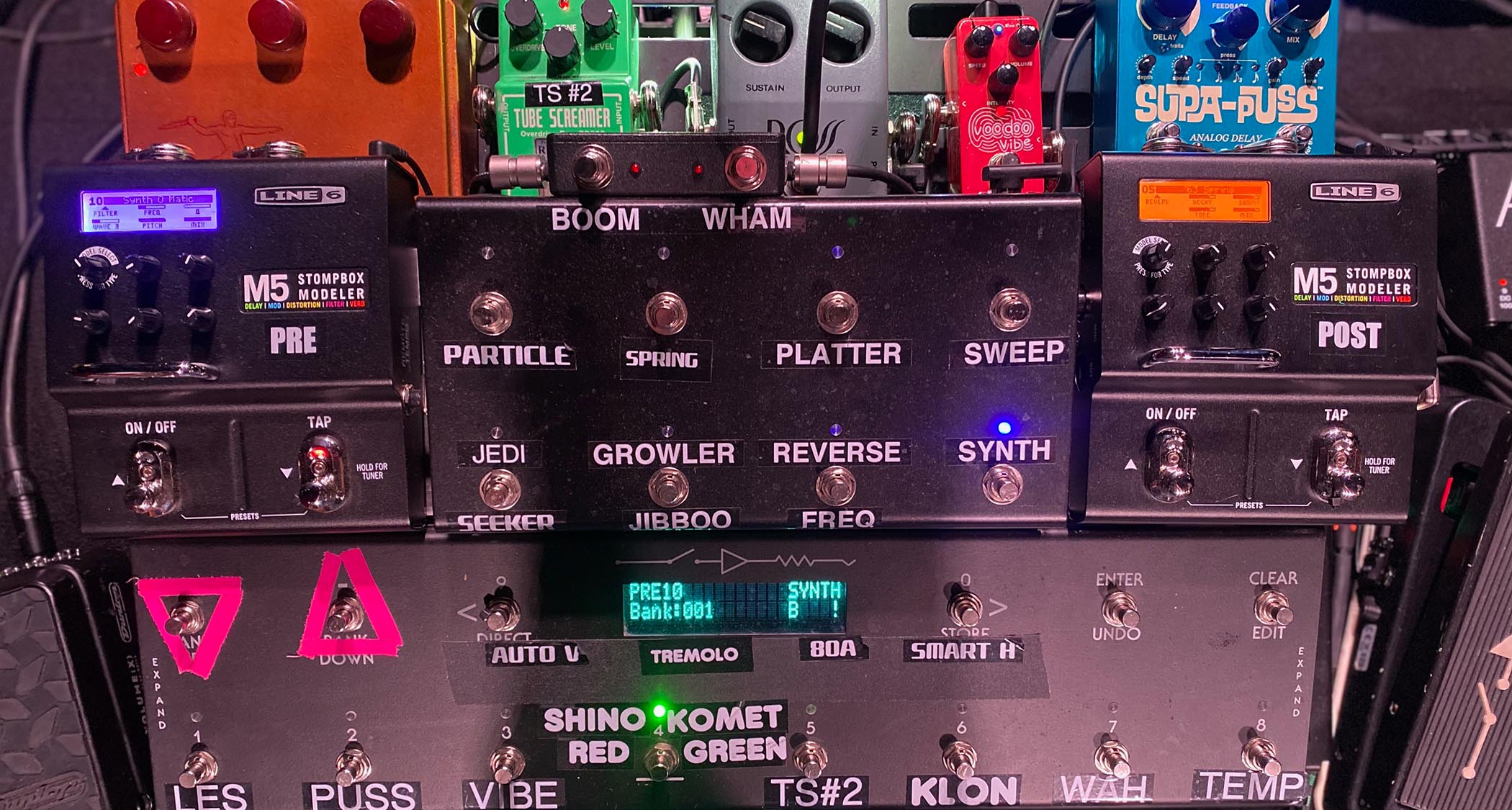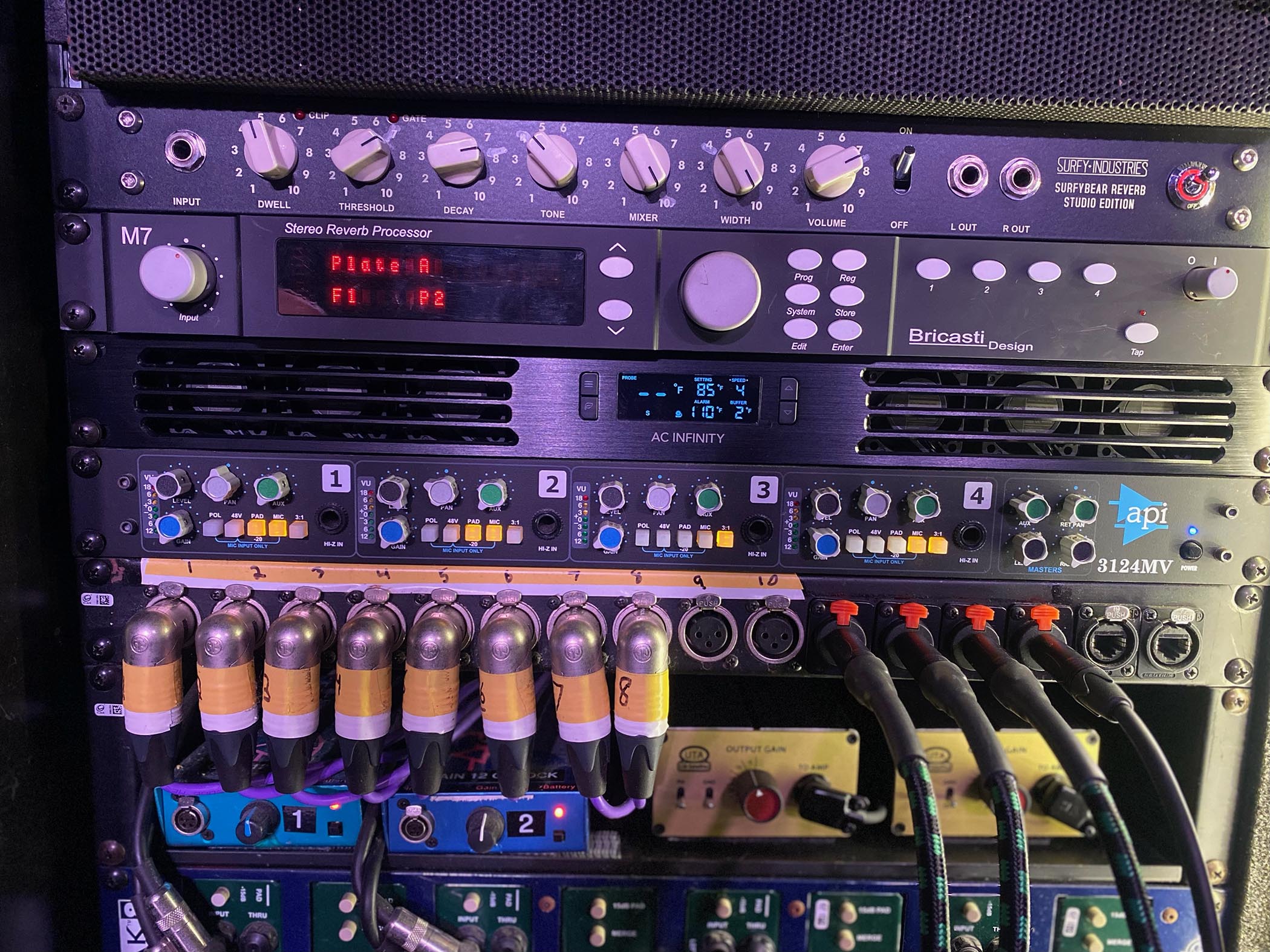“Since the Sphere, we have begun using iso cabinets for the speaker cabinets and the Leslie, leading to all the amps and speakers being off-stage”: Trey Anastasio’s tech, Justin Stabler, reveals all about the Phish frontman’s new live guitar rig

As a companion piece to our Guitar World cover feature with Trey Anastasio, documenting the epic return of Phish, and the creativity that seems to course through Anastasio every time he picks up the electric guitar, we checked in with his tech, Justin Stabler, to find out what was going on behind the scenes.
How does Anastasio configure a rig that has to cater to a super-demanding set, and the tones it demands? Well, it starts with Custom-made Languedoc Guitars…
Here is a nose-to-tail summation of what’s involved, from guitar and effects, to the guitar amps…
Anastasio recently replaced the pickups on all his guitars with pickups by ReWind Electric.
“These are a custom design, which James Finnerty and I worked on together,” says Justin Stabler, Anastasio’s guitar tech. “It includes ’50s wiring with higher-tolerance pots (550k ohms). [They’re] based around ReWind’s 1958 P.A.F. model coils but with different magnets and further under-winding in the neck position.
“Trey’s guitars are fully hollow, and acoustically they sound very different from something like a semi-hollow ES-335 or a PRS hollowbody,” Stabler says.
“The midrange is more similar to a violin or a cello. It would probably be easier for guitar players to imagine something like the old Airline or Danelectro guitars, in terms of its unplugged sound. It has a beautiful top- and low-end that you’d find in a well-crafted instrument.”
All the latest guitar news, interviews, lessons, reviews, deals and more, direct to your inbox!
AUDIO CABLES: Evidence Audio. The main guitar cable is the Lyric HG, which is a solid-core wire.
EFFECTS: Pedalboard designed and built by Bob Bradshaw of Custom Audio Electronics.

“It includes Trey’s ‘greatest hits,’ with an original Ross Compressor and Ibanez TS9 Tube Screamers with Analog Man mods, Boomerang Phrase Sampler and DigiTech Whammy II,” Stabler says.
“The Line 6 M5 Stompbox Modelers carry a lot of weight, covering the crazy synthy sounds, delays, womp-womps or whatever crazy noise Trey can conjure up. There are ‘pre’ and ‘post’ M5 units, which refer to where they sit in the pedalboard signal chain before or after the preamp.”

Other pedals include an original Klon Centaur bronze “horsie” overdrive pedal, Custom Audio Electronics/Dunlop MC404 wah, NuX Voodoo Vibe and Way Huge Supa-Puss analog delay pedal. Pedalboard power supplies are by Mono, with a Cioks AC10 for his sideboard.
Since the Sphere, we have begun using iso cabinets for the speaker cabinets and the Leslie, leading to all the amps and speakers being off-stage
AMPS: The pedalboard has three outputs: Amp 1, Amp 2 and Leslie. Amp 1, for lead tones, is an original Trainwreck Express named “Shinobu” built by Ken Fischer. Amp 2 is a purple Komet 60. NOS tubes are installed in both amps. The Leslie is a G37 rotary guitar combo 100-watt model.
“Since the Sphere [the new Las Vegas venue where Phish played four shows April 18-21, 2024], we have begun using iso cabinets for the speaker cabinets and the Leslie, leading to all the amps and speakers being off-stage,” Stabler says. “To drive the lines from the pedalboard to my world, we use the Undertone Audio GB Tracker to the satellite.
“These things are absolutely transparent, allowing us to run balanced lines over a long distance to retain tone as well as reduce any outside noise that a long, unbalanced cable would pick up.

“The speaker cabinets, each a 1x12 open-back with a Celestion G12H-65, straight-grain Sitka spruce construction and basket-weave grill cloth, are made by Tony Bruno. After the cabinets we take a split at our microphones (Royer 122 ribbon and Shure Beta 57A dynamic).
“One side is the direct microphone; the other hits an API preamp that feeds two different reverbs respectively. On the Komet side we go to a Surfy Industries SurfyBear Studio spring reverb; the Trainwreck hits a Bricasti Design M7 Stereo Reverb Processor with a plate setting. In the past, both amps hit the Bricasti.”
- Evolve is out now via JEMP.
Alan Paul is the author of four books, including Brothers and Sisters: The Allman Brothers Band and the Inside Story of the Album That Defined '70s as well as Texas Flood: The Inside Story of Stevie Ray Vaughan and One Way Out: The Inside Story of the Allman Brothers Band – both of which were both New York Times bestsellers – and Big in China: My Unlikely Adventures Raising a Family, Playing the Blues and Becoming a Star in Beijing, a memoir about raising a family in Beijing and forming a Chinese blues band that toured the nation. He’s been associated with Guitar World for 30 years, serving as managing editor from 1991 to 1996. He plays in two bands: Big in China and Friends of the Brothers (with Guitar World’s Andy Aledort).


